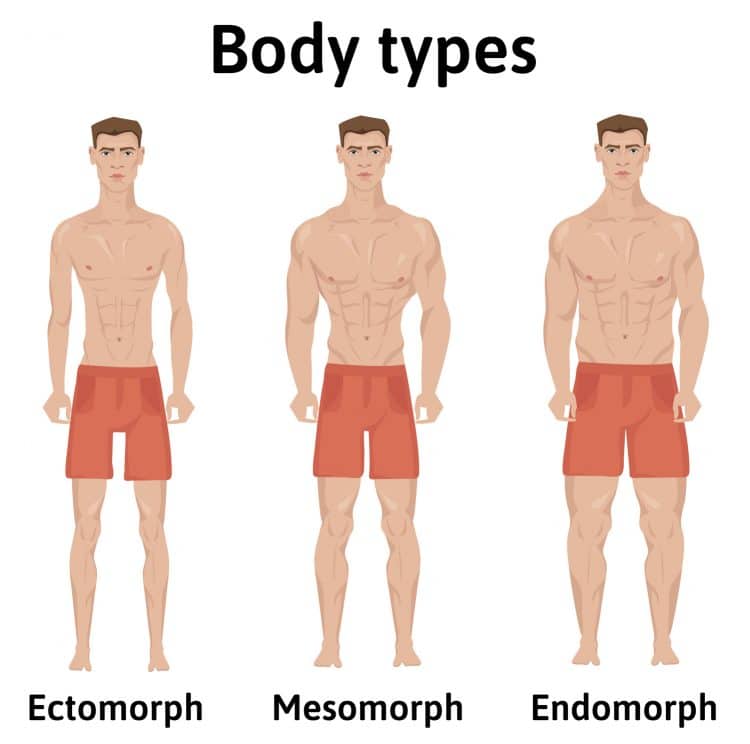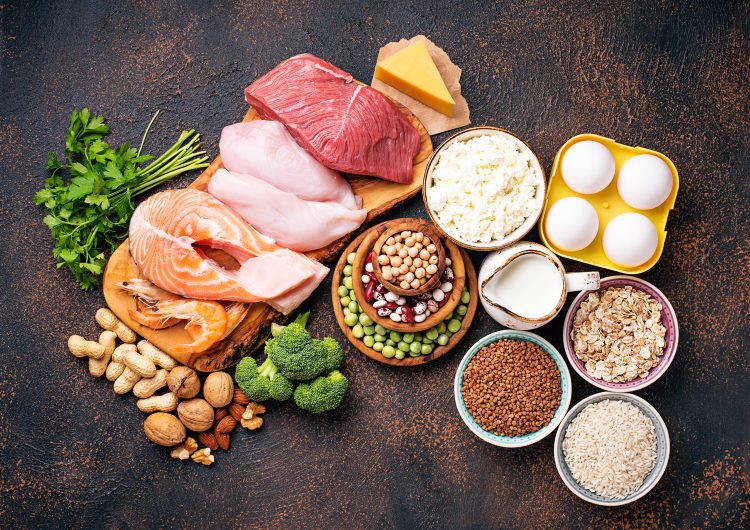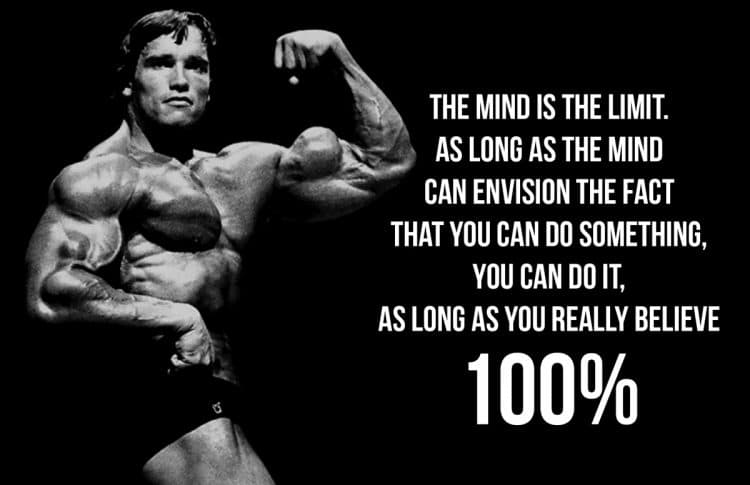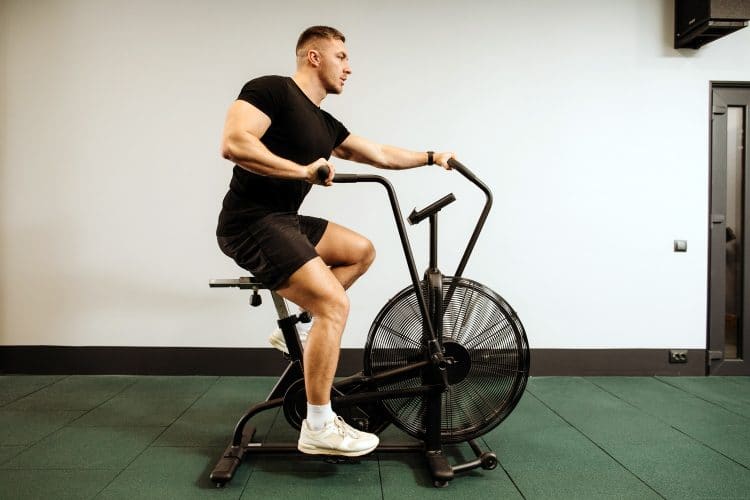Are you one of those who only have to look at food to gain an extra pound? Are you naturally podgy with a pear-shaped or round body that is anything but chiseled?
It sounds like you’re an endomorph. But don’t worry; it’s not fatal to your dream of building a lean, muscular body. It just means you’ll have to go about it a little more strategically.
In this article, we will pull back the curtain on the tactics an endomorph needs to follow to add lean muscle mass to their physique while stripping away unwanted body fat.
A Primer on Somatotypes
Somatotypes, also known as body types, were first proposed in the 1940s by William H. Sheldon, Ph.D., MD. Since then, they have been utilized by nutritionists, exercise physiologists, and even doctors to create efficient tailored fitness programs.

Per somatotype, everyone can be categorized into three broad body types:
- Ectomorphs
- Mesomorphs
- Endomorphs
Very few people are purely one type. However, we all have a dominant type that allows us to fit into one of the three groups.
Ectomorphs have long, lean bodies that are relatively muscular and are body fat-free. They have trouble putting on weight, which can make them the envy of those around them. By the same token, they also struggle to gain muscle weight.
Endomorphs readily put on weight and have a lot of body fat and muscle. Football linemen are more frequently endomorphs. Marilyn Monroe and Oprah Winfrey are two well-known examples of endomorphs. As we see in the case of Marilyn, you don’t have to be overweight to be an endomorph.
Mesomorphs are athletic looking, sturdy, and naturally stronger than the other two groups. They can eat whatever they want without worrying about being overweight or underweight. They can both put on and lose weight without much effort.
[sc name=”style-blue-box” ]
Tip: Use our Body Type Quiz to find your body type: Endomorph, Ectomorph, or Mesomorph
[/sc]
Challenges of Being an Endomorph
Endomorphs tend to struggle with their weight. Even cardio exercise and calorie-restricted short-term diets are not as effective for achieving their weight loss goal.
Endomorphs trying to pack muscle mass have a double challenge. Besides regulating their body fat levels, they’ve got to work to put on lean muscle tissue. That means they’re going to have to consume more calories. Unless the process is carried out strategically, they will inevitably gain fat.
The key is to find a dietary strategy to increase muscle mass without putting on body fat.
An endomorph has to be more careful about each morsel that goes into their mouth than an ectomorph or a mesomorph. As a result, they should avoid bulking. Bulking involves eating surplus calories without strictly monitoring your food sources. You can typically expect to put on some fat along with muscle mass on such a program.
Insulin Sensitivity

A person’s insulin sensitivity is the quantity of insulin required to lower blood sugar levels to normal after consuming a particular amount of glucose.
Your insulin sensitivity can be influenced by your diet, activity levels, and genetics. Ectomorphs and mesomorphs are usually more insulin sensitive than endomorphs, which is one of the main reasons endomorphs are more likely to accumulate fat than ectomorphs and mesomorphs.
Fat oxidation is stopped for a longer period in an endomorph than in an ectomorph or mesomorph. That is because an endomorph will need to release more insulin to transport a given amount of glucose into cells.
An endomorph must pay close attention to insulin secretion to maintain lean gains. After a meal, the body increases the absorption and oxidation of glucose to get rid of excess glucose since the body does not want glucose floating around in the bloodstream.
Over time, persistently high blood sugar levels can cause cells to become insulin-resistant, making them less sensitive to its effects. As a result, more insulin must be released to bring blood sugar levels back to normal, reducing fat oxidation for longer periods.
Endomorphs have a harder time staying fat-free because fat oxidation is shut off for longer periods than is the case for ectomorphs or mesomorphs.
Caloric Intake for Endomorphs
Weight gain or loss depends on your daily calorie consumption. You will gain weight if you take in more calories than you burn. If you burn more calories than you consume, you’ll lose weight. When it comes to weight gain, the type of gain depends on the food sources and whether or not you are engaging in physical exercise.
As an endomorph, you need to eat more calories than you burn to gain lean muscle tissue. But you need to be careful not to go too much over your maintenance level, or you will gain fat.
The starting point here is to work out what your maintenance calorie level is. You can find this out by entering some basic data into an online calorie calculator. Here is a reliable calculator that we recommend using.
Once you know how many calories you need to consume to maintain your current weight, you should add 250-500 calories to it to create the excess that can be used to build lean muscle tissue.
So, if your maintenance level is 2,250 calories, you should establish your daily caloric intake goal at either 2,500 or 2,750 calories per day. Our recommendation would be to consume 2,750 calories on your workout days when you need more energy and reduce it to 2,500 calories on your non-training days.
Carbohydrate Intake

Endomorphs must limit their fast-acting carb intake to limit insulin release. The fewer simple carbs you eat, the more likely your weight gain will be made up of lean muscle tissue.
Endomorphs should limit their carbohydrate intake to certain times of the day. We recommend only eating carbs for breakfast and before and after your workout. So, let’s say you train in the early evening. You should have carbs for breakfast, such as oatmeal. Then, after the workout, you can have a sweet potato with your dinner. You should also take some fast-acting carbs as part of a post-workout shake (such as dextrose).
Add a small portion of vegetables and fruit to your other meals throughout the day. On your non-workout days, you should only eat non-vegetable or fruit carbs with your breakfast.
Your carbohydrate intake should comprise about 35 percent of your total caloric intake.
[sc name=”style-blue-box2″ ]
Try our carb cycling calculator.
[/sc]
Protein Intake

Protein is the building block of your muscles. You need the amino acids that protein breaks down into to course through your bloodstream constantly. Set the goal of consuming 1.6 grams of protein per kilogram of body weight. That means a 90-kilogram guy should take 144 grams of protein every day.
You can use a combination of whole foods and supplements to meet your daily protein requirement. Your body was designed to digest real food, so most of your protein should be in that form. However, a protein shake per day can make things more convenient. Consume a fast-digesting whey isolate shake after your workout to get those amino acids directly to the target muscle.
Consume lean protein every three waking hours.
5 great protein choices:
- Eggs
- Whey Isolate Protein Powder
- Chicken
- Steak
- Tuna
Protein should make up 35 percent of your total calories.
[sc name=”style-blue-box2″ ]
Tip: Calculate your optimal daily protein intake with the best protein calculator.
[/sc]
Fat Intake

About 30 percent of your daily calories should come from fat. More important than the total fat intake is the balance between saturated, monounsaturated, and polyunsaturated fats.
A 1/3 saturated, 1/3 monounsaturated, and 1/3 polyunsaturated fat breakup is recommended. You can optimize your health, body composition, and performance by balancing your fat intake this way.
5 great fat choices:
- Walnuts
- Coconut Oil
- Avocado
- Salmon
- Eggs
[sc name=”style-blue-box2″ ]
Tip: Calculate your recommended Daily Fat Intake.
[/sc]
Eat Frequent, Smaller Meals
Eating small but frequent meals is considered better than eating three big meals. Eating irregularly makes you prone to eating more than required.
Avoid overeating by eating smaller, more frequent meals. Consuming smaller meals enables better control of insulin secretion. A 400-calorie meal will also cause less insulin to be released than a 1,000-calorie feast, regardless of the macronutrient content.
Eat 4-5 meals per day, each containing around 400 calories (adjust to meet your calorie goal).
Weight Training Workouts for Endomorphs

Endomorphs will find it easier to gain muscle mass than ectomorphs. However, they will also be more likely to gain some fat simultaneously. So, though both endomorphs and ectomorphs should use similar exercises, the endomorph will get better results in terms of lean muscle gains with a higher rep scheme. The emphasis should be on muscular endurance training rather than pure strength and hypertrophy.
Here are a few exercises to add to your training regimen:
- Squat
- Deadlift
- Dumbbell bench press
- Pull-up
- Lunge
- Bent-over row
- Military press
- Alternate dumbbell curl
- Skullcrusher
Those nine exercises, in conjunction with the cardio workouts detailed in the next section, will create the foundation for lean muscle gains for endomorphs.
You should divide your exercises into two separate workouts in the following way:
Workout A:
- Squat: 3 x 10-30
- Lunge: 3 x 10-30
- Deadlift: 3 x 10-30
- Military Press: 3 x 10-30
Workout B:
- Dumbbell Bench Press: 3 x 10-30
- Pull-Up: 3 x 10-30
- Bent-Over Row: 3 x 10-30
- Alternate Dumbbell Curl: 3 x 10-30
- Skullcrusher: 3 x 10-30
Your rep range should see you pyramiding down from a high of 30 reps on your first set down to 10 reps on your last set. Increase the weight on each set so that you hit failure on the last rep.
Perform each workout twice per week, with at least 48 hours gap between each session.
5 Hacks to Own Your Workouts
Incorporate the following tips into your training regimen for improved results:
Hack #1: Develop Mind-Muscle Connection

You should lift with a laser-like concentration. The first way to do this is to develop a solid mind-muscle connection. If you are doing squats, for example, concentrate on your thighs. Let nothing else matter. Be in the moment.
While engaging your brain with the body mechanics of the movement you are performing, you need to, at the same time, switch it off for the part that is trying to curtail your workout. You know that part that is always attempting to interfere with your set with the following rationale:
- You’ll get injured
- Hurry up or you’ll miss that appointment
- Don’t overtrain
We all have that voice inside, and it’s always trying to get us to do less than we should. Never negotiate with it. Instead, do the opposite — tell yourself what you’re about to do is easy.
Hack # 2: Lift Your Sternum
Many exercisers go into a lift with rounded shoulders and their backs hunched. This is a very immobile position. By lifting your sternum, you will be extending through the thoracic spine. Think about bringing the sternum up, so it is level with the ground. Doing so will set your shoulder blades in the right spot for curling and overhead lifting.
Hack #3: Pull with Your Elbows
While doing a pulling exercise, such as the lat pull-down, don’t think about pulling with your hands. If you do, you are likely to pull down using your wrists. To focus on your lats, you need to pull with your elbows. When doing the lat pull-down, think of your hands simply as hooks and concentrate on pulling down with your elbows. As a result, your elbows will move down and back beyond the level of your lats.
Hack #4: Brace Your Core
You must contract your core when performing exercises like the deadlift or military press. To accomplish this, pull down your lats as the first cue. Imagine performing pull-downs with your arms straight. Squeeze the chest now. This will give you trunk rigidity, helping you deadlift or perform overhead movements with more weight. Squeeze your glutes as tightly as possible while at the top of the exercise (such as in the upright position of the deadlift). You will attain a complete hip extension if you do this. Again, you’ll be more stable and able to lift more weight.
Hack #5: Squeeze the Bar
Whether you’re using a machine, a dumbbell, or a barbell, you should use a vice-like grip. Squeeze your fists as hard as possible. Doing so will enable you to activate your stabilizer muscles. When you squeeze the bar, the force will transmit all the way up your arm. This makes it easier for you to perform an upper-body lift safely.
Cardio Workouts for Endomorphs
As an endomorph, you should get into the habit of performing some form of cardio exercise 5-6 times per week. Doing so will help burn stored fat while increasing your heart’s ability to pump more blood. This will also improve your oxygen uptake. Both these factors will improve your body’s fat-burning capability.

Workout Day Cardio
On your weight training days, you should do some form of low-intensity steady-state (LISS) cardio training. This will allow you to burn fat and rev up your metabolism without interfering with the intensity demands of your resistance workouts.
If you train at a commercial gym, you should perform your cardio sessions immediately before or after your resistance workouts. That means that you don’t have to make two trips to the gym.
You could choose between performing your cardio before or after your workout. Keep in mind that your main goal on training days is to go all-out in your weight training sessions. Your cardio sessions should not divert you from that goal.
Many people find that doing a 20-30 minute low-intensity session on a treadmill is a good physical and mental warm-up for their weight workout. Others prefer to get straight into the heavy lifting and use cardio as a cool-down. We suggest you experiment with both to see which works best for you.
You can choose from a range of cardio exercises. Popular choices are the treadmill, elliptical, step machine, and rowing machine. The key is to perform cardio for at least twenty minutes and to move at a pace that will allow you to carry out normal conversation.
Non-Workout Day Cardio
On your non-weight training workout days, you should perform high-intensity interval training (HIIT) to burn off body fat.
HIIT has hit the headlines over recent years because a whole raft of studies have shown conclusively that it is a far superior form of fat loss to aerobic exercise and resistance training.
HIIT is so effective as it brings on the EPOC effect. EPOC stands for excess post-oxygen consumption. It means your body will continue burning fat long after you’ve ended your workout as if you were still exercising. In fact, HIIT will keep your metabolism revved up for 24-32 hours after your workout has finished. [1]
HIIT training produces more mitochondria in the muscle cell. And mitochondria are effective at burning fat. An Australian study separated women into two exercise groups: moderate-intensity cycling and high-intensity HIIT-style cycling. The first group performed 20 minutes of steady cycling. The second alternated between 8 seconds of sprint cycling and 12 seconds of gentle cycling for five minutes.
After fifteen weeks, tests revealed that only the women in the HIIT group lost weight. The average weight loss among the group was 11.3 pounds. Besides losing fat from their thighs, the women lost weight from their stomach area, and their average fasting insulin was down by 31 percent. [2]
Your HIIT workouts will involve repeating a short all-out sprint with an even shorter recovery period for eight rounds. You can do it on any piece of equipment. Most people find the treadmill or the spin bike to be the most effective.
Here’s how to do HIIT on a treadmill.
- Get on the treadmill and set the speed to 3.5 mph. Over the next two minutes gradually increase the speed.
- Start sprinting at full capacity from the second minute.
- Sprint for exactly 20 seconds.
- Throw your legs out to the side of the running bed and rest for exactly 10 seconds.
- Continue this pattern until you have completed eight sprints.
- Cool down for two minutes at 3.5 mph.
Here’s what your weekly workout schedule should look like with both your weight training and your cardio sessions included:
| Mon | Tues | Wed | Thurs | Fri | Sat | Sun |
| Workout A
LISS Cardio |
Workout B
LISS Cardio |
HIIT Cardio | Workout A
LISS Cardio |
Workout B
LISS Cardio |
HIIT Cardio | HIIT Cardio |
You’ll be training every day in this program, which can seem a little overwhelming. Keep in mind, however, that your HIIT sessions are very short, though also very intense. You will complete each session in just 10 minutes, including the warm-up and cool-down.
Many people find it takes longer to get to the gym than to actually perform their HIIT cardio workouts. For that reason, you may find it more practical to do your HIIT sessions at home. You can do that by replacing your treadmill sprints with sprints in your backyard or on the road.
Summary
As an endomorph, you have the challenge of dealing with a slower metabolism and other genetic factors that predispose you to store body fat. When you’re trying to develop a lean, muscular physique, you’ve got to pay attention to your diet. You also need to combine resistance training to build muscle with cardio (both LISS and HIIT) to lose body fat.
Here’s a review of the key points endomorphs need to follow:
- Increase your caloric intake by 500 calories beyond your maintenance level on workout days
- Increase your caloric intake by 250 calories beyond your maintenance level on workout days
- Limit your non-vegetable and fruit carbs to breakfast and post-workout
- Consume 35 percent of your calories from carbohydrates
- Eat a palm-sized serving of lean protein every three hours
- Consume 35 percent of your calories from protein
- 30% of your calories should come from healthy fats
- Eat frequent, smaller meals
- Focus on compound exercises using a 10-30 rep range
- Train each body part twice per week
- Do LISS cardio on workout days
- Perform HIIT cardio on non-workout days
Stay consistent with these guidelines, and you will steadily transform your endomorphic body into a leaner, more muscular physique.
References
- Ito S. High-intensity interval training for health benefits and care of cardiac diseases – The key to an efficient exercise protocol. World J Cardiol. 2019 Jul 26;11(7):171-188. doi: 10.4330/wjc.v11.i7.171. PMID: 31565193; PMCID: PMC6763680.
- Mazurek K, Zmijewski P, Krawczyk K, Czajkowska A, Kęska A, Kapuściński P, Mazurek T. High intensity interval and moderate continuous cycle training in a physical education programme improves health-related fitness in young females. Biol Sport. 2016 Jun;33(2):139-44. doi: 10.5604/20831862.1198626. Epub 2016 Apr 1. PMID: 27274106; PMCID: PMC4885624.


